As it has been rumoured for days now, the NHL officially announced on Tuesday, Mar. 26, that the regular season is finished, and the league will begin playoffs sometime in July. The format will be different than normal, as there will be 24 teams in this year’s postseason rather than the standard 16.
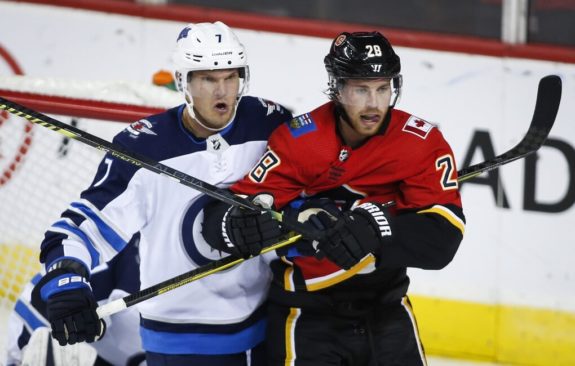
The 24-team format means that the Calgary Flames will face the Winnipeg Jets in the first round. One other major difference in this year’s playoffs is that the first round sounds like it will be a best of five series, rather than the usual best of seven. This will certainly benefit the weaker teams, as they may be able to squeak out three wins against a more talented opponent.
Related: New Jersey Devils: Top 10 Rookie Seasons
As for this series, it should be very entertaining. Both teams have some highly talented players which should make for some good hockey to watch. At the time of the pause, they had nearly identical records. The Flames were third in the Pacific Division with a 36-27-7 record through 70 games for a total of 79 points, while the Jets sat in the first Wild Card position with a 37-28-6 record through 71 games for a total of 80 points. With that said, here’s how the two teams stack up against one another.
Forwards
Advantage: Jets
Neither team had great offensive numbers this year, as the Jets ranked 16th in the league with 216 goals scored, while the Flames were just behind with 210, which was 20th. Despite being similar in scoring, however, the Jets’ top players had better offensive seasons than the Flames, as players like Johnny Gaudreau and Sean Monahan struggled throughout the year.
As for the Jets, they continued to get the usual productive numbers from players like Mark Scheifele and Blake Wheeler. However, it was Kyle Connor who ended up leading the team in scoring with a career-high 38 goals. He also had 73 points which tied Scheifele for the team lead. Meanwhile, Patrik Laine bounced back in a big way after a tough previous season, with 28 goals and 63 points in 68 games.

Offensively, it appears the Jets have the upper hand, as they had four players (Scheifele, Connor, Wheeler, Laine) who had over 60 points, while the Flames had just one (Tkachuk). Despite some of the Flames star players’ disappointing seasons, however, everyone knows what they are capable of from previous seasons. Perhaps the break was just what they needed to get going again.
Defence
Advantage: Flames
The Jets may have the Flames beat up front, but the back end is a different story. It was a tough season for Winnipeg on the blue line right from the get-go, as star defenceman Dustin Byfuglien never reported to the team at camp and remained out all season long. That, along with them trading Jacob Trouba and losing Tyler Myers via free agency really depleted their back end.
Compared to last season, the Flames’ blue line also had their fair share of struggles as well, as captain Mark Giordano ended up leading the defense in scoring with just 31 points. This was a big drop off from last year’s Norris Trophy-winning 74-point season, and played a big part in why many of the Flames forwards struggled.
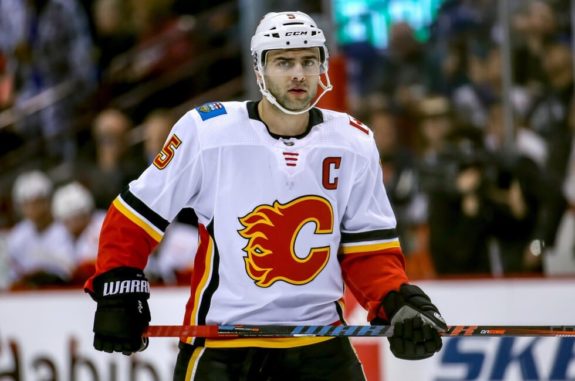
Despite the low offensive numbers, they still possess a very good blue line, with names such as T.J. Brodie, Travis Hamonic, Rasmus Andersson, and of course Giordano. They also have Noah Hanifin and newly acquired Erik Gustafsson who both have the abilities to be very impactful defencemen.
For the Jets, their blue line does not have nearly as many big-name players, aside from Neal Pionk and Josh Morrisey. Pionk had a great season this year, posting a career-high 45 points, while Morrisey, the team’s best all-around defender, had 31. Outside of those two, their back end consists of some players that fans may not recognize the names of. That isn’t meant as disrespect to those players, but just goes to show how inexperienced Winnipeg’s blue line is.
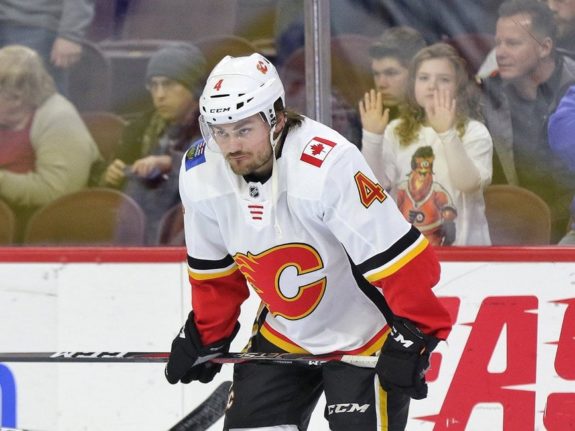
As for team stats, these two were yet again extremely close on goals against. The Flames allowed 215 goals on the season, which ranked them 16th in the league. The Jets, on the other hand, allowed 203 goals which was good enough for 12th. Despite the Flames having allowed more goals against on the season, they still have the better blue line of the two teams.
Goaltending
Advantage: Jets
This may be the biggest gap and possibly what ends up deciding the series. Jets goaltender Connor Hellebuyck is without a doubt one of the best in the NHL, and has a great chance at winning his first Vezina Trophy after the terrific season he put together. The pause may have also greatly benefitted the 27-year-old, as he had appeared in 58 of the Jets’ 71 games this season.
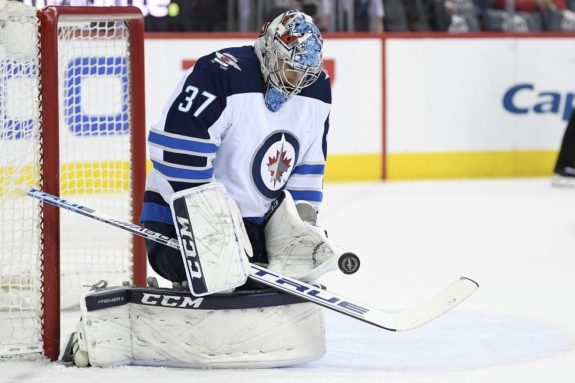
As for the Flames, their goaltending situation is somewhat different. Unlike Hellebuyck, who is the definitive No. 1, the same cannot be said for David Rittich. He will start the series, but if he struggles, it is likely he doesn’t have a very long leash. Despite the hot start to the season which resulted in an All-Star appearance, he cooled off considerably later in the year. The drop-off in play could also be somewhat due to fatigue, so there is a chance the pause benefits him as well.
The one luxury Calgary does have over Winnipeg is in regards to their backup situation. The Flames picked up veteran Cam Talbot in free agency this offseason, and it has paid off, as the former Edmonton Oiler has had a solid season for them.
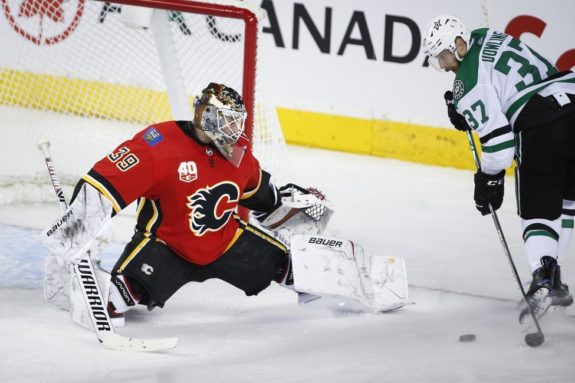
The same cannot be said about Winnipeg’s backup Laurent Brossoit, who is in his second year with the team. The 27-year-old played quite well in 2018-19, but has struggled big-time this season. His 19 games played this season show that the Jets do not have a ton of confidence in him and likely would not turn to him even if Hellebuyck were to struggle.
Despite Calgary having the better backup goalie, the Jets still win the goaltending matchup by a wide margin. Of course, it is possible Rittich is able to outduel him, especially with it being a five-game series, but there is no doubt that Hellebuyck is the superior of the two.
Power Play
Advantage: Neither
Yet again, these two teams are extremely close, this time in terms of power-play percentages. The Flames hold a slight edge in this category, as they scored 41 power-play goals on 193 opportunities, which was 12th place throughout the league at 21.2 percent. The Jets had slightly more power-play opportunities with 205, but only scored 42 goals for a slightly lower 20.5 percent conversion rate, which was 15th.
Penalty Kill
Advantage: Flames
Though the power plays were even this season between the two teams, the same cannot be said about their penalty kill. The Flames played very well when down a man, finishing eighth in the league with an 82.1 percent penalty kill as they gave up just 35 goals on 196 attempts.
Related: 3 Best Devils to Never Win a Stanley Cup
The Jets penalty kill was a much different story, as they ranked 22nd in the league with a 77.6 percent success rate, allowing 39 goals on 174 attempts. Had the NHL kept the usual 16-team playoff format, the Jets would have had the second-worst penalty kill amongst playoff teams.
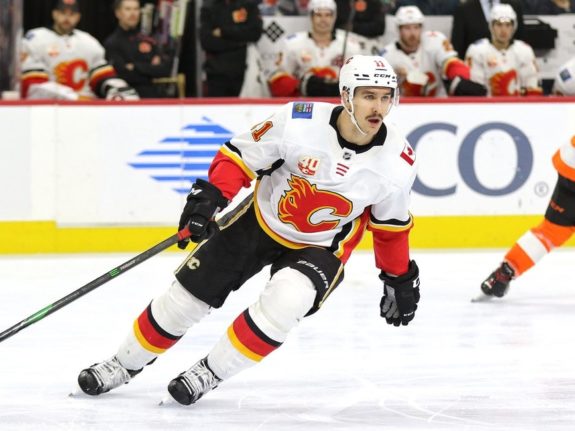
The power plays appear to be a wash, but the Flames win the special teams battle due to their far superior penalty kill. Of course, it is possible the Jets penalty kill gets better in time for the playoffs, but a big reason for their struggles on it this season are due to their weak blueline. If the Flames are able to force the Jets to take lots of penalties, it could be the deciding factor in this series.
Exciting Series Expected
One thing is for sure, and it is that this is going to be an extremely exciting playoff series. In fact, this is likely the most intriguing matchup of the first round. These two teams were extremely close in the standings as well as personal stats all season, and it wouldn’t be surprising to see that continue into the playoffs. You can expect this series to go right down to the wire.